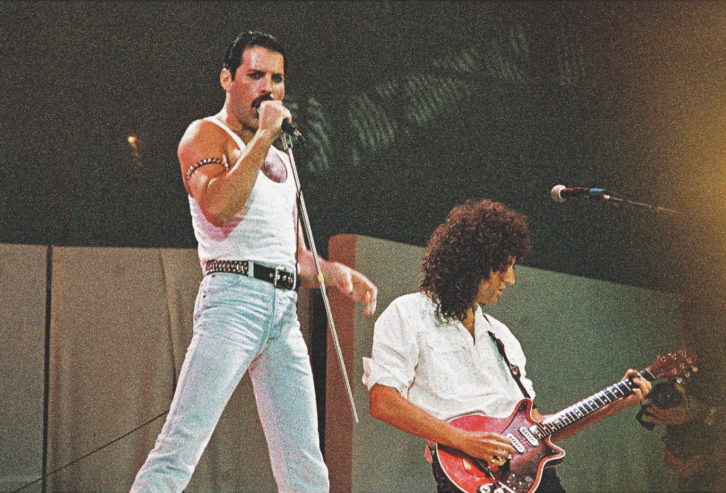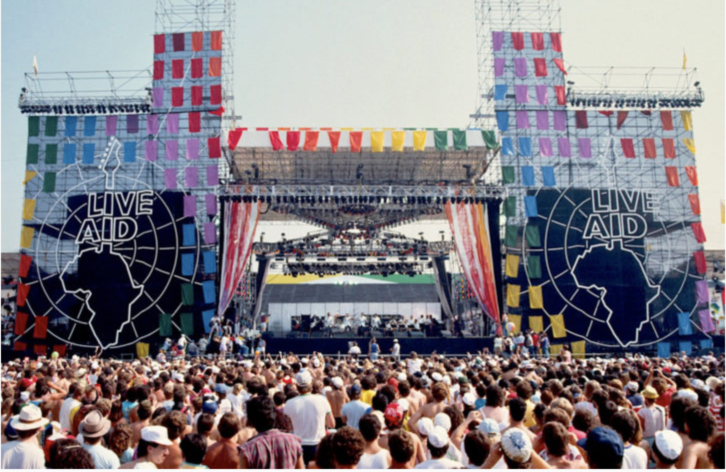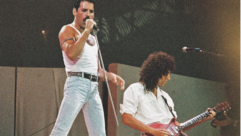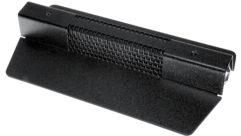We look back at the live sound effort that went into the legendary charity concert Live Aid, held simultaneously in London and Philadelphia. With 60+ acts on the bill and 160,000 in attendance—not to mention 1.9 billion watching it on TV—Live Aid was the musical highpoint of 1985, and a live sound challenge from the first note to the last, with a dizzying mix of variables (and no RF coordination).
LIVE AID LONDON (Steve Harvey)

London, UK–To say that the Live Aid benefit concert was ambitious is an understatement. Held simultaneously at London’s Wembley Stadium and Philadelphia’s John F. Kennedy Stadium on July 13, 1985, it was broadcast live to an estimated 40 percent of the world’s population and featured an all-star roster of artists who had to be shepherded on and off stage with almost split-second timing—whether they were ready or not. And just to make things more difficult, the first time anyone really heard the PA, supplied by Malcolm Hill Associates, was when Status Quo kicked off proceedings with “Rockin’ All Over the World.”
In total, 48 Hill M4 4-way cabinets were flown per side, with a stack of four per side for in-fill, controlled by a Hill 3-way stereo crossover. The M4 housed three long-coil 12-inch ATC speakers in a direct radiating/folded horn configuration and a pair of 10-inch dual-concentric Tannoy speakers plus, passively crossed over, a Renkus-Heinz horn and SSD 3301 compression driver. A combination of Hill TX1000 3-channel and DX3000 2-channel amplifiers provided power to the rig. TX1000 power amplifiers also drove two systems of tri-amped wedges, which used the same speaker components as the M4s. Hill C3 cabinets were available for side fill and drum fill use. In front of house….MORE@PSN
LIVE AID PHILADELPHIA (Clive Young)

Philadelphia, PA– By the time the US half of Live Aid kicked off at noon on July 13, 1985, the UK edition had already been rocking for five hours, but given everything that had happened before the show even started, it was as if they entire production had been running a marathon for days.
From there on out, performances would alternate between the UK show in London, and the US concert in Philadelphia’s JFK Stadium until the UK called it a day at 10 PM in London / 5 PM in Philly, with the US then continuing on until 11 PM. During the overlapping hours, broadcasters worldwide alternated performances between the shows, giving crews on each side of the Atlantic extra time to set up and tear down while the other continent’s acts were performing. However, just getting to that point was already an accomplishment for the live sound pros on hand, given that the entire gig had come on short notice.
A team of 12-15 pros from Clair loaded into the site three days before the show, and since there was little in the way of pro-grade audio equipment available commercially back then, virtually all of the sound gear was proprietary. That included roughly 120 Clair S-4 speakers and eight prototype P boxes, powered by Clair’s Phase Linear 700B amplifiers. All that PA was loaded into scaffolding on either side of the stage, with long-throw boxes placed 50 feet up in order to peg the stands on the far side of the stadium. When it comes to recalling the front of house mix position, memories and accounts vary, but there were up to six Clair CBA32 mixing consoles there, all summed into a Harrison SM-5 console used both as a matrix mixer and for media inputs from the White House, the Space Shuttle and other outside sources. MORE@PSN










